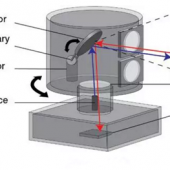Lots of laser pointer and laser alignment are available with different wavelength range in spectrum. The risk level varies from different part of the spectrum. Below shares hazards of laser pointers with different wavelength:
Far IR (more than 2500nm)
Infrared radiation with wavelength longer than 2500nm is stopped by the cornea. This IR laser has very low risk spectral region.
Middle IR (2500nm-1400nm)
Infrared laser radiation with wavelength between 1400nm – 2500nm is stopped by the lens. Middle IR laser has low risk spectrum region.
Near IR (800nm-1499nm)
Visible and infrared radiation from 800nm to 1400nm is focused on retina. Near IR laser is the most dangerous spectral region.
Visible Light (400nm – 800nm)
Visible light radiation from 400nm to 800nm is visible to human eyes. People should not star at visible beam directly. It contains lasers, e.g, 405nm violet laser, 445nm and 460nm blue laser, 515nm, 520nm and 532nm green laser pointer, 635nm and 650nm red laser, 589nm yellow laser.
Near UV laser (300nm-400nm)
Ultraviolet radiation with wavelengths between 300nm and 400nm is stopped by the lens. There are no lasers within the medical field in this region. The sun and solarium emit here.
Mid and far UV (shorter than 300nm)
Ultraviolet radiation with short wavelength than 300nm is stopped by the cornea. It has low danger but human should be careful with mercury lamps and war welding. The excimer laser emit in this region. Sunshine in snowy areas and welding can cause sunblindness.
